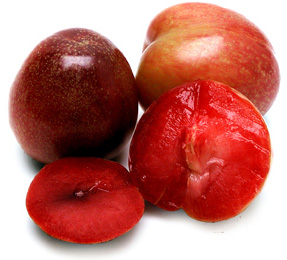I guess it’s good to know that other country’s bureaucracies are every bit as irrational as my own, especially when dealing with the regulation of alcohol and other so-called “controlled” substances. It seems the Latin American country of Costa Rica is having issues with a Swiss beer, Hanfblute, because it contains the essence of marijuana to impart the cannabis aroma in the nose. It’s no secret, that information is listed on the label and Hanfblute has been sold in the Central American nation for four years. And, of course, marijuana is also illegal in Switzerland, too, meaning if there were any mind-altering cannabis (or THC) in it, the Swiss would have put the kibosh on the beer long ago. They do use hemp leaves and flowers in the brewing of the beer, but it contains nothing that could get you high.
Guiselle Amador, the head of the Instituto de Alcoholismo y Farmacodependencia (IAFA) — Costa Rica’s pharmaceutical and drug dependency institute — “expressed her concern for the sale of the beer in Costa Rica for its negative implications that it is good for ones health.” The IAFA is asking the health minister to investigate the importer’s permit and take the beer off the market. Despite the fact that the beer contains no marijuana whatsoever, she’s afraid it might persuade people to start smoking pot. Why, you might reasonably ask, would she think that? Apparently there’s a cannabis leaf on the label (pictured below) which she believes is a subliminal message which could entice people to begin smoking weed. I don’t know what Amador is smoking but if she thinks seeing a marijuana leaf on a beer label will lead people to fire up a spleef then clearly her country has more troubles than just this.
Here’s one logo:
And here’s the bottle label:
Clearly they’re skating on the periphery of what polite society deems acceptable with their label, but the family owned Brauerei Locher brews at least twenty different beers, of which the Hanfblute is only a small part. This is no hippie commune beer but a serious beer with a nod to a tradition that predates the use of hops in beer. Are they having a little fun with it? Sure, why not? They know the market for their beer. In my experience, hemp enthusiasts are fanatical in their love of the versatile weed. So why not market to a supportive audience?
The first hemp beer I remember was from Frederick Brewing in Maryland. I think it was called Hempen Ale and was made using hemp seeds (I’m shooting on memory here, if anybody knows for sure, let me know). I also remember shortly thereafter having a meeting with Mario Celotto (the former Oakland Raider and now former owner of Humboldt Brewing in Arcata, California) and suggesting to him that with his backyard’s reputation he should make a hemp beer. Several months later (I think around 1998?) Humboldt Hemp Beer made its debut and is still being brewed by Firestone Walker under the same label (they bought the Humboldt brand in 2003).
But I still can’t understand why people in government agencies are convinced that mere labels will corrupt people to the point where they’re afraid to allow citizens to even see something they find objectionable. It’s obviously ridiculous that seeing a cannabis leaf would make someone unable to control the urge to become a drug addict. It’s equally ridiculous that seeing Santa Claus on a label will make kids want to drink beer or seeing nudity on a label will .. well, I don’t really know what the easily offended think seeing nudity will do to harm society, that one will always be a head-scratcher to me. But we see this time and time again in the United States and — as this story makes clear — around the world, too. Most people if asked would probably say the national pastime is baseball and worldwide it has to be football (soccer). Personally, I think the true favorite pastime is trying to control other people in what they think, what they see and what they can do. Determining what is moral or good and trying to impose it on the rest of us seems to occupy a lot of a certain kind of person’s time and energy. The rest of us are just trying to enjoy ourselves and live our lives as best we can. But as long as there are people whose agenda includes stopping people from doing things that they don’t like or making decisions about how to live their lives that they disagree with, the remaining majority of us won’t be able to rest. As for marijuana, my favorite comedian, Bill Hicks, said it best:
Why is marijuana against the law? It grows naturally upon our planet. Doesn’t the idea of making nature against the law seem to you a bit… paranoid? You know what I mean? It’s nature. How do you make nature against the f#%king law? It grows everywhere. Serves a thousand different functions, all of them positive. To make marijuana against the law is like saying God made a mistake.
Which I find doubly ironic since most rabid anti-drug and anti-alcohol organizations seem religiously based or at least motivated by some weird morality that they believe is based on religion. But I also think Hicks’ argument works for beer, as well, which is likewise made from all natural ingredients growing wild on the planet. Ive said it before a million times, but if those of us who just want to be left alone and not told what to do and think, we have to remain ever-vigilant against this kind of nonsense wherever and whenever we can.











